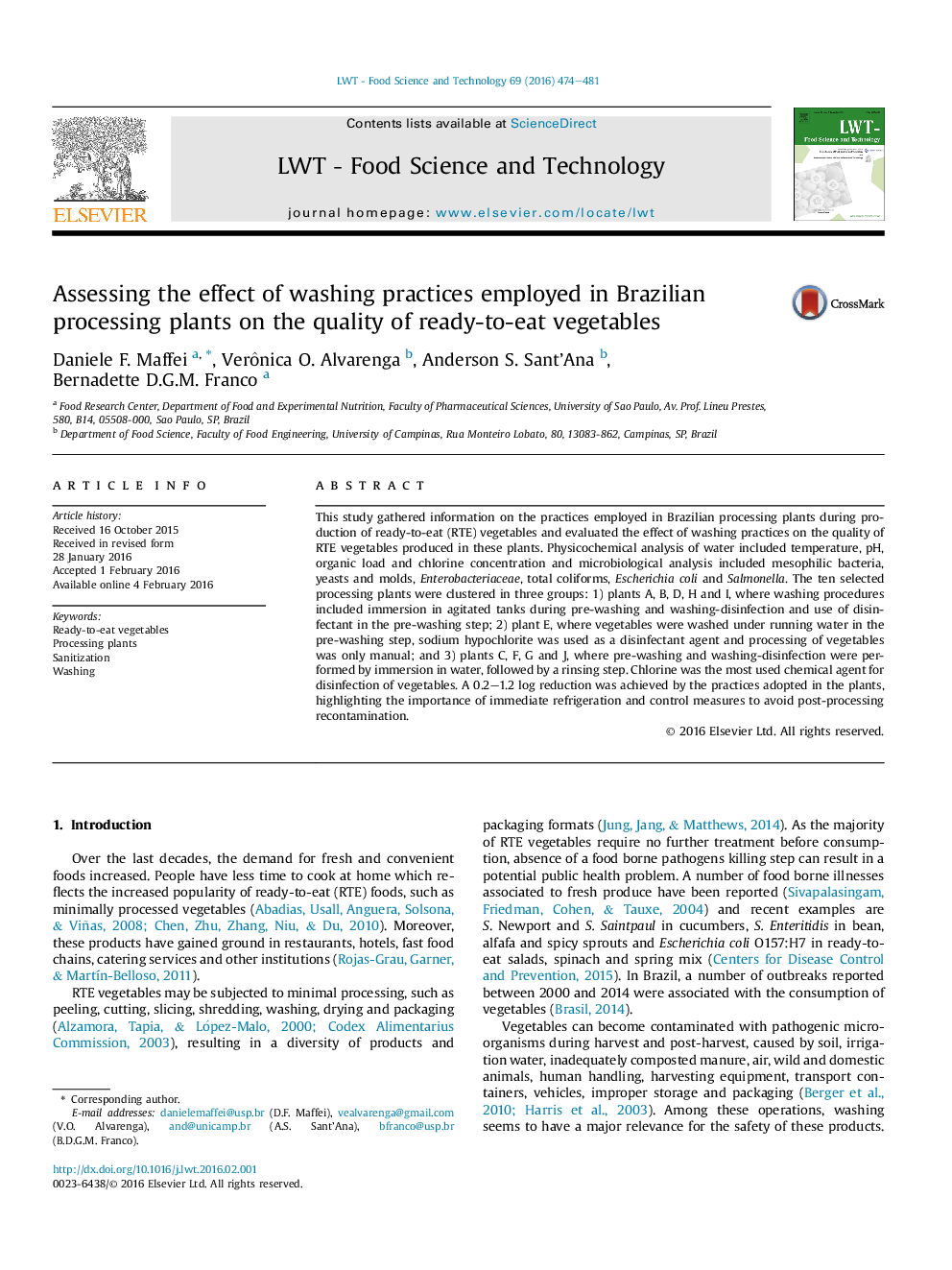| کد مقاله | کد نشریه | سال انتشار | مقاله انگلیسی | نسخه تمام متن |
|---|---|---|---|---|
| 4563771 | 1628528 | 2016 | 8 صفحه PDF | دانلود رایگان |
• Practices in ten Brazilian plants for production of RTE vegetables were evaluated.
• Based on processing practices, the ten RTEV plants were clustered in three groups.
• Chlorine was the most used chemical agent for disinfection of vegetables.
• A 0.2–1.2 log CFU/g reduction was achieved by the practices adopted in the plants.
This study gathered information on the practices employed in Brazilian processing plants during production of ready-to-eat (RTE) vegetables and evaluated the effect of washing practices on the quality of RTE vegetables produced in these plants. Physicochemical analysis of water included temperature, pH, organic load and chlorine concentration and microbiological analysis included mesophilic bacteria, yeasts and molds, Enterobacteriaceae, total coliforms, Escherichia coli and Salmonella. The ten selected processing plants were clustered in three groups: 1) plants A, B, D, H and I, where washing procedures included immersion in agitated tanks during pre-washing and washing-disinfection and use of disinfectant in the pre-washing step; 2) plant E, where vegetables were washed under running water in the pre-washing step, sodium hypochlorite was used as a disinfectant agent and processing of vegetables was only manual; and 3) plants C, F, G and J, where pre-washing and washing-disinfection were performed by immersion in water, followed by a rinsing step. Chlorine was the most used chemical agent for disinfection of vegetables. A 0.2–1.2 log reduction was achieved by the practices adopted in the plants, highlighting the importance of immediate refrigeration and control measures to avoid post-processing recontamination.
Journal: LWT - Food Science and Technology - Volume 69, June 2016, Pages 474–481
